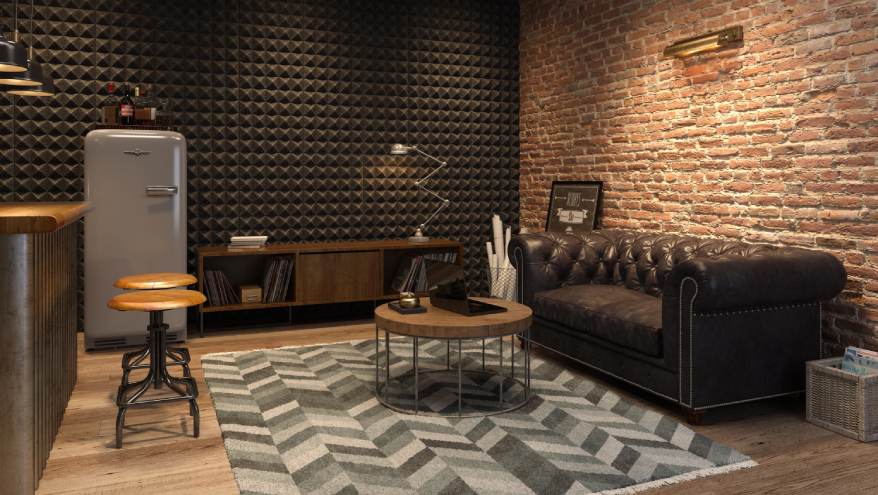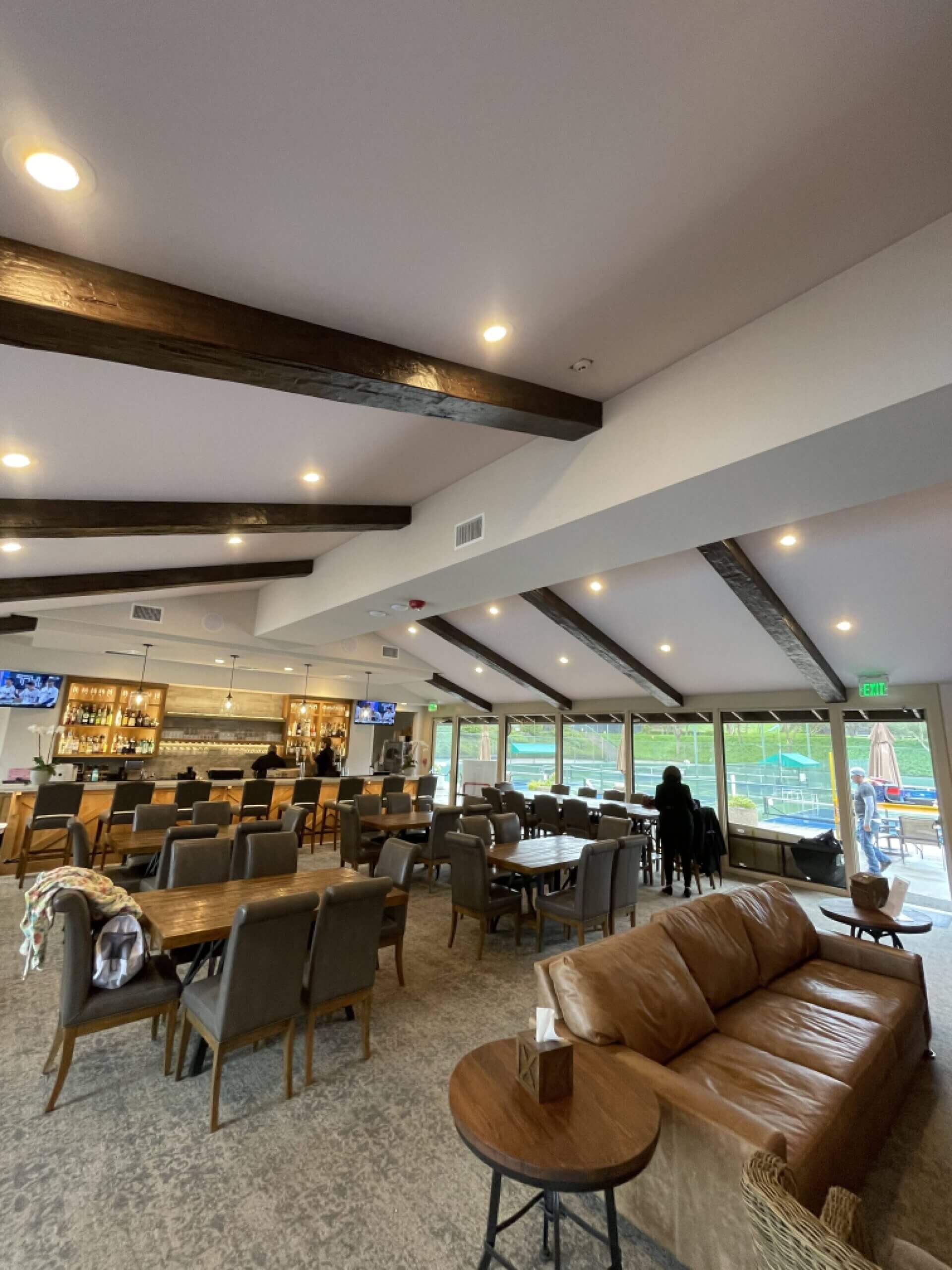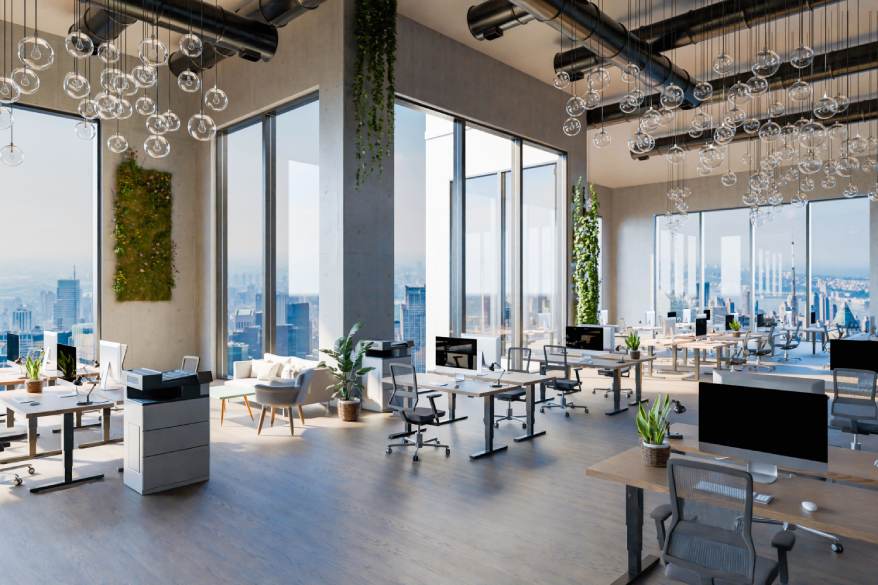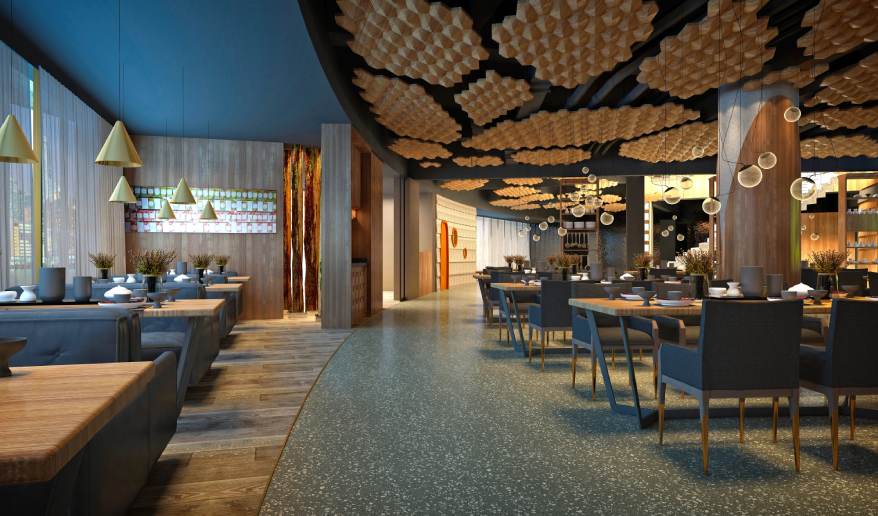

The Sound Control Needs of Restaurants
Restaurants face unique noise control challenges that directly impact the customer experience. A noisy environment can overwhelm patrons. This makes conversation difficult, while a too-quiet space can feel uncomfortable. Striking the right balance is key to creating a welcoming atmosphere.
Hard surfaces like tiles, glass, and metal reflect sound, contributing to excessive noise. Without proper acoustic treatment, a busy dining area can become unbearable, especially with noise from the kitchen, bar, and banquet areas spilling into the dining space.
Additionally, sound from the kitchen and “make ready” (waiters’) stations can disrupt the dining experience. Background noise from music, chatter, and kitchen equipment affects speech privacy and comfort.
Restaurants often lack barriers and have diners seated close together, complicating traditional noise control methods. Sound travels through direct, reflected, and deflected paths, and treating these paths allows for isolation, absorption, and neutralization.
Strategically placing kitchens, bars, and banquet rooms helps minimize noise overflow. If too much sound reflects from surfaces, the conversation becomes stressful, with patrons raising their voices or cupping their ears to hear. A well-managed sound environment contributes to a more enjoyable dining experience.

Sound Management Solutions for Restaurants
Sound Management Group offers tailored solutions to help restaurants manage noise and create the right atmosphere for guests and staff. Our custom acoustic panels are designed to fit your space. They absorb sound and reduce reflection to lower noise levels.
Sound masking systems add ambient sound and cover disruptive noise and providing diners with privacy and comfort. We also have eco-absorb treatments, which are sustainable materials that reduce noise without compromising aesthetics.
For areas like kitchens and bars, we provide sound isolation solutions that create barriers to limit noise from spilling into dining areas. Additionally, our Acoustic Impressions digital prints combine noise control with custom designs that complement your restaurant’s decor.
These treatments help control the noise levels in your space. They allow patrons to talk at a normal volume without raising their voices. When the noise level is lower, people tend to speak more quietly and create a more comfortable dining experience. Without these treatments, the noise level builds up. This leads to the "cocktail party effect" where everyone speaks louder, causing even more noise.
Around each source of sound in your restaurant exists an invisible "bubble" – a reverberation field. Inside this bubble, the sound is dominant. It allows people to converse without raising their voices or straining to hear. When the sound is properly controlled, the "bubble" can be small enough to help diners communicate easily. This can create a lively atmosphere without overwhelming noise.
Gallery +
Related Blogs












